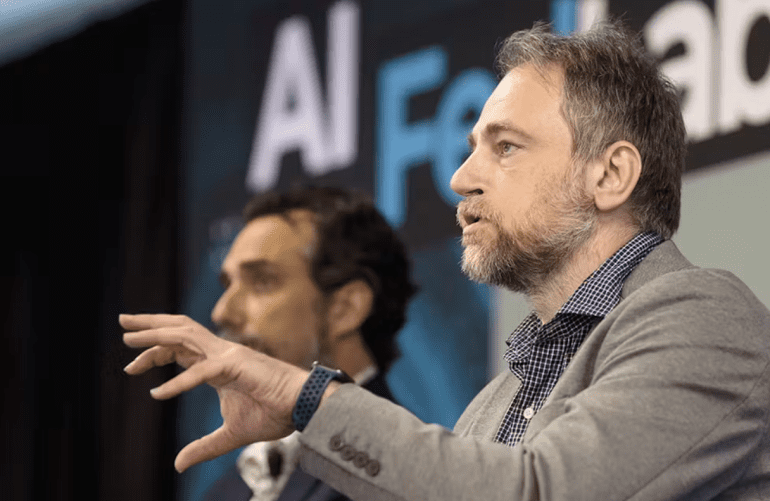- Leaders at CAISER emphasize the importance of proactive discussions to mitigate future AI security issues
- Amir Sadovnik highlights AI’s unique vulnerabilities due to its dependency on data
- The necessity for scientific approaches to understand and secure AI systems is noted
- Importance of interagency collaboration in addressing AI and cybersecurity challenges emphasized
- The focus on attracting and retaining skilled AI professionals to enhance cybersecurity
- CAISER director advocates for internal development programs and leveraging academic partnerships
- Urgency for agencies to stay current with emerging AI threats and engage in continuous dialogue
- The need for a cautious approach in AI adoption, recognizing and managing associated risks
Main AI News:
At the newly inaugurated Center for AI Security Research (CAISER) at Oak Ridge National Laboratory, leaders underscored the urgency of initiating proactive discussions on AI security to forestall future dilemmas. “A pivotal goal we’re setting at CAISER is to bridge the gap between departments and fields to ensure AI’s safety,” remarked Amir Sadovnik, CAISER Research Lead, during a keynote panel at AI FedLab in Reston, Virginia, on Wednesday.
AI technologies possess unique attributes not seen in previous systems, Sadovnik noted, with a heavy reliance on data, which heightens susceptibility to new kinds of vulnerabilities. “As an AI researcher, the intricacies of what happens inside the AI systems are sometimes elusive to me. I can construct them, but comprehending their learning mechanisms is challenging, which opens up numerous vulnerabilities,” Sadovnik explained. He emphasized the center’s scientific approach to dissecting both cybersecurity and AI security to ensure robust systems.
Sadovnik also highlighted the importance of interagency cooperation in tackling AI and cybersecurity challenges, noting that synergy with various government bodies is a priority for Oak Ridge. “We actively translate lessons from one agency to another, fostering a collaborative ethos which is central to our national laboratory’s mission,” he stated.
The enhancement of cybersecurity capabilities through the recruitment and retention of adept AI professionals is another focus, according to CAISER Director Edmon Begoli. He advocated for initiating internal development programs and recruiting highly educated personnel. “Considering the rapid evolution and complexity of this field, it’s crucial for agencies to employ individuals who thoroughly understand AI. I suggest bolstering internal training as competition is fierce and collaboration with academic institutions is beneficial,” Begoli advised. He added, “Retention is significantly aided by offering unique opportunities that are hard to find elsewhere.”
Furthermore, Begoli urged agencies to remain vigilant against emerging threats by staying updated on the latest trends and engaging in ongoing dialogues. “AI is fundamentally insecure and operates autonomously, surpassing traditional software in capability and, consequently, in potential threats. This necessitates heightened focus on IT security and safety measures,” he pointed out.
In his concluding remarks, Sadovnik called for cautious advancement in AI deployment, stressing the importance of recognizing and understanding AI risks. “Much of our work at the center involves defining and assessing risks—while some risks are manageable as they are an inherent part of progress, it’s crucial to identify, measure, and decide on the acceptable level of risk,” he asserted. Sadovnik encouraged the government to continue advancing AI innovations but with a mindful approach towards safety and risk management.
Conclusion:
The initiatives and strategies outlined by CAISER’s leaders signal a significant shift in how government agencies and research centers are approaching AI security and development. By emphasizing the importance of interagency collaboration and the need for a deep understanding of AI systems’ intricacies, CAISER is setting a precedent for a proactive and integrated approach to AI security. This focus on fostering internal expertise and maintaining continuous dialogue on emerging threats positions the AI security market for growth, driven by innovation and a heightened awareness of security needs. Such developments are likely to stimulate increased demand for AI security solutions, attract investments in AI research, and ultimately shape the future landscape of technology security infrastructure.

